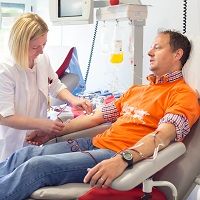New Class of HIV Drug Shows Promise in Initial Study
Novel second-generation HIV-1 maturation inhibitor shows favorable antiviral activity and safety profile in HIV-1, subtype B-infected subjects

A proof of concept study for a new class of an HIV-1 drug being developed by Bristol-Myers Squibb met the primary objective, with what the company said were encouraging results for a drug designed to prevent the virus from maturing in patients.
Results of a clinical trial that tested a second-generation HIV-1 maturation inhibitor were reviewed by Max Lataillade, DO, MPH, associate professor of medicine and infectious diseases, Yale University School of Medicine, and global development lead for multiple HIV drugs for Bristol-Myers Squibb, during an abstract presentation at the 2015 Conference on Retroviruses and Opportunistic Infections in Seattle, WA. The investigational drug, identified as BMS-955176, is designed to inhibit a later step of the HIV-1 life cycle.
“Until we find a cure for HIV, novel antiretrovirals are needed that target different steps of the HIV life cycle” with unique resistance profile and a better long-term tolerability, Lataillade said.
The phase IIB study assessed antiviral activity, safety, and exposure response during 10 days of monotherapy in 40 patients infected with HIV-1 subtype B, according to the abstract. Patients were randomized to once-daily dose groups of 5, 10, 20, 40, 80, or 120 mg of the investigational drug or placebo.
The primary endpoint was change in HIV-1 RNA from baseline to Day 11. Secondary endpoints were safety and exposure-response.
Median change in HIV-1 RNA from baseline to Day 11 ranged from −0.15 to −1.36 log10 c/mL, and maximum median change between baseline and Day 24 when patients were discharged ranged from −0.50 to −1.70 log10 c/mL across the BMS-955176 groups, according to the abstract. Maximum median declines in HIV-1 RNA were similar for the 40-120 mg once-daily dose groups regardless of baseline Gag polymorphisms.
“Another interesting observation is that the majority of patients between 40 and 120 mg remained at more than one log drop for an additional week after dosing was stopped,” Lataillade said. “This was likely related to the long plasma half-life of the drug.”
Unlike BMS’s first-generation maturation inhibitor candidate, BMS-955176 showed similar antiviral activity in subjects with wild-type HIV-1 or HIV-1 with Gag polymorphisms. Overall, the drug was found to be generally safe and well tolerated.
In a separate release, Bristol-Myers Squibb’s Douglas Manion, MD, head of specialty development, said the company is encouraged by early data that indicates the drug merits continued research.
“Together with our investigational attachment inhibitor and currently marketed therapies, we are continuing our decades-long commitment to HIV research and development by seeking to build an array of treatment options designed to address the unmet needs of all people living with HIV, from those who are new to treatment, to the growing group of treatment-experienced patients with limited choices among available regimens,” Manion said.